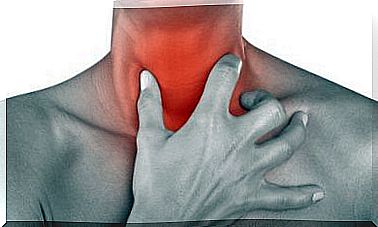What Types Of Bulimia Are There?

Do you know the types of bulimia that exist? Although many people have heard of this disease, not everyone is aware of how it occurs.
As some scientific articles have suggested, this eating disorder is one of the most common diseases among adolescents, especially among women. Its symptoms and the factors associated with it are quite varied. Bulimia is commonly associated with social pressures regarding the perfect figure. To find out more about this, we invite you to read the lines below!
What is bulimia?
Bulimia, also called “nervous bulimia”, is an eating disorder (ED) that is characterized by the presence of frequent eating, followed by compensatory actions such as induced vomiting, laxative abuse, fasting or intense training. The main goal is to avoid gaining weight.
Often, this diagnosis is made when symptoms occur at least twice a week for a period of three months. It is important to distinguish bulimia from excessive eating disorder (BED), as it does not include periods of compensatory behavior.
In the case of those suffering from bulimia, changes in eating patterns and obsessive behavior, which controls weight, create physical and psychosocial damage. A state of malnutrition occurs, which affects the most important functions of the body, especially in the brain.
Although the female population is the most affected from a demographic point of view, bulimia also occurs in men, children and preadolescents. In general, excessive food consumption occurs after a period of diet; the evolution of the disease can also be chronic or intermittent, with moments of recurrence.
An article published by the Spanish Pediatric Association states that those who practice activities such as modeling, dancing, athletics or rhythmic gymnastics have a higher risk of developing bulimia.

What are the types of bulimia?
In the case of purgative bulimia, the person in question consumes laxatives, diuretics or other drugs that affect the metabolism. It also induces vomiting and uses enemas and other methods that allow it to “reverse” excessive food consumption.
A distinctive feature of those who suffer from this form of the disorder is that they hide from those around them. Regardless of how and when they hurt themselves, over time, the body will begin to undergo visible changes; from neck damage to problems with the teeth and digestive tract, among others.
In contrast to the previous form, those who suffer from this variation of bulimia do not take laxatives, but rather have a compensatory behavior. They assume that food will be digested and absorbed into the body. Therefore, do not resort to vomiting or the use of diuretics or laxatives. Instead of these methods, they may adopt a behavior to “compensate for food intake”, such as intense and excessive exercise or fasting for long periods of time.
What are the risks of suffering from this disorder?

How can we treat bulimia?
Bulimia, regardless of the form in which it occurs, requires the intervention of a specialist. This disorder will not resolve on its own and, in fact, tends to get worse over time. Therefore, early diagnosis is fundamental.
In general, any warning signs must be considered. Doctors, nutritionists and psychologists can direct those who suffer from bulimia to healthier eating practices to overcome the disease.









